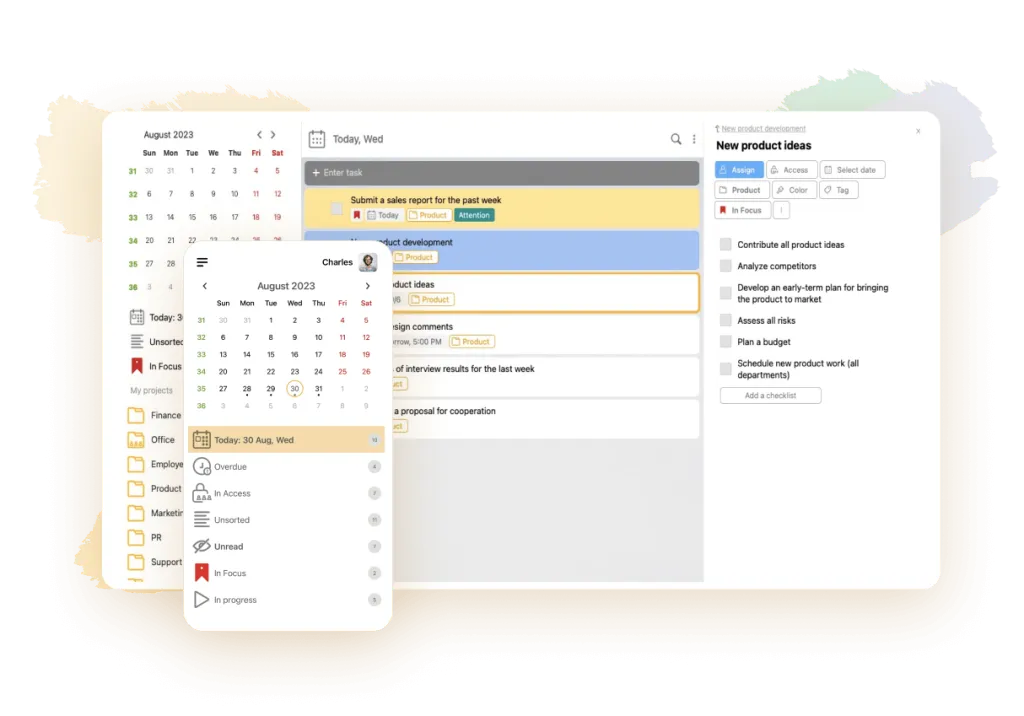
Ted Scott
January 31, 2024
Not all plans are destined to come true. Even if you plan your activities carefully, there are many factors that can prevent the accurate realization of all your objectives. This will lead to a deviation from the final goal, increasing the time to achieve it. Realizing the inevitability of contradictions between planned and actual results, it is important to find out the reasons for deviations and make appropriate conclusions.
For competent assessment of the current situation, a special expert method - GAP analysis - is used. It studies the “gaps” between planned and actual results. What is the peculiarity of this strategic analysis, what does it mean, how does it work, how is it conducted? Let’s try to understand.
What is GAP analysis

The method is based on variance analysis. It is used to improve any process. Gap are discrepancies between the current state (where the company is now) and the desired state (where it would like to be). Gap Analysis compares actual performance with planned performance, analyzes how well the quality or appearance of products meets customer expectations. It gives an idea of how efficiently human and other resources are utilized. Based on the values and differences obtained, weaknesses in the subject area are identified.
The main purpose of GAP-analysis is to detect gaps between the goals and capabilities of the company with the selection of ways to eliminate them. A diagnostic audit can be conducted at any stage of activity, but there are several situations when it is vital:
-
When developing a plan for teams;
-
To find out the reasons for the failure of the previous project;
-
To effectively allocate the resources available to the company.
GAP-analysis visually demonstrates “bottlenecks” in business processes, allowing the manager to focus on areas that require changes. As a result, balanced and rational decisions are made, and the optimal path from the current state to the desired one is chosen.
The GAP-analysis is built in two directions:
-
To compare goals and achieved results;
-
In order to change the current situation in the future.
Its most important segments are considered to be:
-
Sales markets;
-
Quality of products and services;
-
Company Business Processes;
-
Information Technology;
-
Business Management.
In fact, it is a study that compares the current situation with the planned one, helping to understand what is being done wrong. Its essence can be expressed as a formula calculation: Desired = Available + Necessary or Desired - Available = Necessary. The real result of the analysis is the detection of gaps and the development of interventions to close them. The main components of GAP analysis are: current state, desired state and gap.
Where it is used and why it is important
The use of GAP-analysis is in demand in the banking sector, where it is used to maintain an optimal balance between liabilities and assets of the institution. It is also used in logistics, for efficient organization of international transportation. In the manufacturing industry, this methodology is used to solve the issues of output balance, product realization, inventory reduction and cost reduction. In IT sphere Fit/GAP-analysis is used, which investigates gaps and conformance to the established parameters. The method is successfully applied in economics, marketing, management, and other types of activities.
Gap analysis is applied in a comprehensive search for principles to bridge the gap between the primary architecture and the requirements of a given environment. This topic of internal alignment is most relevant in marketing cases, where it is necessary to determine what steps need to be taken in a competitive market to be really effective. Gap analysis is also called gap finding, which is used to identify the most important problems in the work environment that may be preventing the achievement of goals.
Pros and cons of GAP analysis
The pros of the technique include:
-
Ease of execution. It is enough to compare the current and planned results.
-
Versatility, allowing the GAP method to be applied to any company, person or industry.
-
An opportunity to assess the potential of a company or project, to make an effective plan to minimize losses.
Cons:
-
The analysis identifies only the apparent causes of deviations without considering the many secondary factors.
-
It aims to achieve the planned outcome without revising and adjusting plans that may not be sufficiently relevant or accurate.
Stages of implementation

In order to perform the analysis, the necessary information must be collected. The further process consists of the following steps:
-
Study of the current state. First of all, a forecast of the state of affairs in the company is made. An assessment is made of what positions the organization can achieve. The advantages that it will get due to the introduction of certain changes are determined.
-
Assessing achievability. The gap must be surmountable given the technology and management system available to the company. For this purpose, possible constraints are identified during the analysis. If the gap is too large, the change plan is adjusted or divided into small segments that provide small positive changes (incrementalism).
-
Forecasting, development of scenarios. The overall gap is broken down into individual elements on functional, territorial, sectoral basis. These are further used for planning. Plans are formed on the basis of groups of needs that affect the elimination of gaps between the current situation and the future. Needs can be communication, financial, technical, information or other.
-
Creating action plans. This step creates detailed gap-closing activities involving employees, distribution channels, competitors, and government services.
Types of GAP analysis
We have already mentioned that this analytical research is conducted in many areas. Let us consider some of them in more detail:
Product or market shortages
Statistically, up to 95% of new product releases are unsuccessful. To solve this problem, a market gap analysis is conducted. It examines competing products and businesses, helps to discover deficiencies in the product’s features or advertising, strategies to market it to capitalize on market prospects.
Strategic gap analysis
Compares current performance against long-term targets approved in a five-year or strategic development plan. This type of GEO analysis demonstrates how well the business is performing compared to competitors.
Financial or profit gap analysis
By comparing prices, margin percentages, employee training and retraining costs with those of competing organizations, the company gets information about what it is missing.
Tools and techniques for performing a GAP analysis
Various methods and systems are used to perform GAP analysis, such as:
-
SWOT analysis (examines the strengths, weaknesses, opportunities and threats to the company).
-
McKinsey’s 7S model, which helps businesses understand how well they are moving towards a goal. It consists of 7 elements: structure, strategy, systems, skills, style, people and values, which complement and reinforce each other. If problems occur in even one link, the entire company suffers.
-
Nadler-Tushman fit model of 4 elements (work, people, organizational structure and culture). They are combined into 6 pairs for analysis: work/people, work/structure, work/culture, people/structure, people/culture, culture/culture.
Example of performing a GAP analysis
Suppose that you own a company producing children’s toys. Recently, the volume of their sales has begun to decrease. GAP-analysis will help you to find out the cause:
| Breakdown | Goal | Action |
|---|---|---|
| Decrease in purchasing power of the population due to unfavorable economic situation | Reduce the final cost of goods by reducing costs | Revision of raw material suppliers, modernization of production |
| Users are not satisfied with the characteristics of the product | Improve the characteristics, change the quality of the product | New product development, redesign |
| Active activities of competitors | Develop our own dealer sales network | Improving the quality of personnel performance Opening of own chain stores |
That is, the current situation is studied first. Next, it is necessary to understand why customers are leaving and where to? The main purpose of the analysis is named, the reasons for the gap are identified, and a “rescue” plan is drawn up, including such measures as expanding sales markets (if products are represented in one region) and other actions.
Effective strategic planning with LeaderTask

In order to grow any company, it is important to rationally utilize its assets, money, resources and technology. In order to understand where you want to go, first of all, you need to focus on the current state of the business. All work processes, connections, communications between employees and departments can be reflected in the digital service LeaderTask, which is a modern planner, task manager and convenient project management program.
In the application you can create goals, projects, tasks. Combine them by priority, deadlines, and track the efficiency of their fulfillment. Compare current results with planned ones for analysis. See a clear working picture on informative kanban boards or graphics. Control the timing and quality of tasks.
The application synchronizes with popular services. Allows you to store all important information in a single space. It has a high-quality mobile version. Supports backup functions with the ability to restore lost data. Functions on all digital platforms, including offline mode.
Conclusion
GAP-analysis is a tool for assessing a company’s current performance, comparing its indicators with planned parameters. It is good for its simplicity, realism and versatility. You can use the methodology in production, marketing, IT, or in your personal life. It gives the best results when each team member knows what duties to perform, strives to eliminate gaps in the field of their responsibility.. In combination with services that optimize business processes, such as LeaderTask, helping to improve the company’s business processes, allows you to achieve your goals faster and reduce errors.








